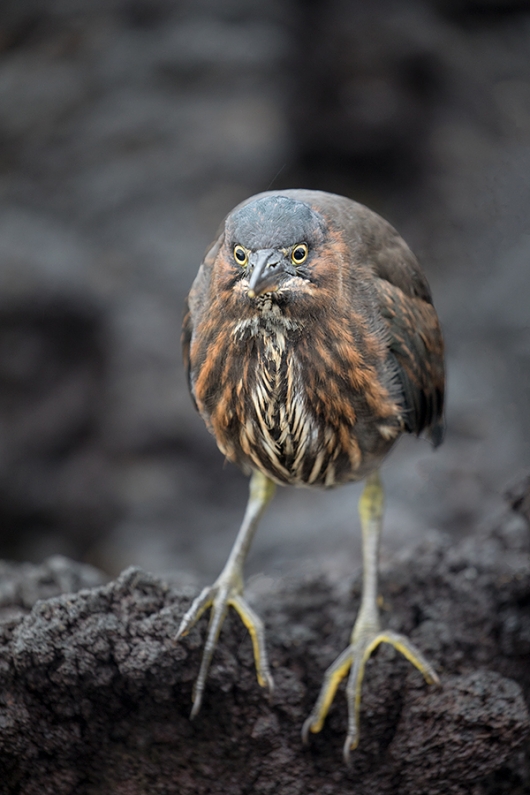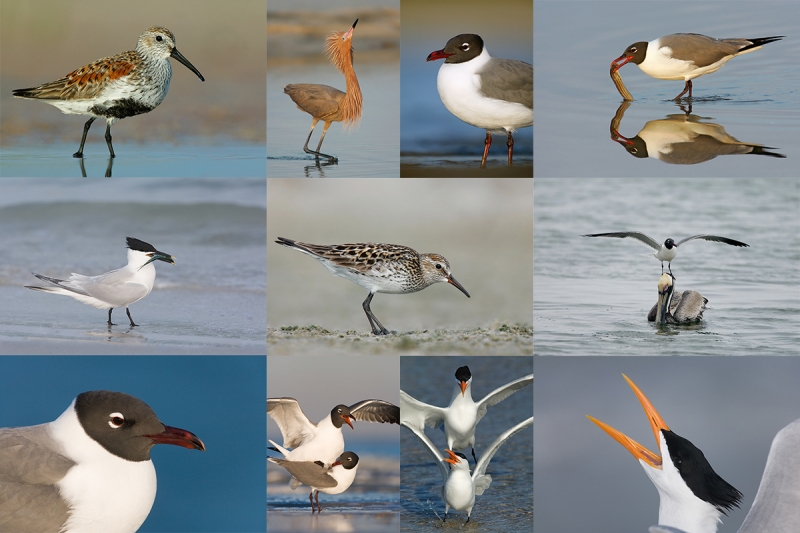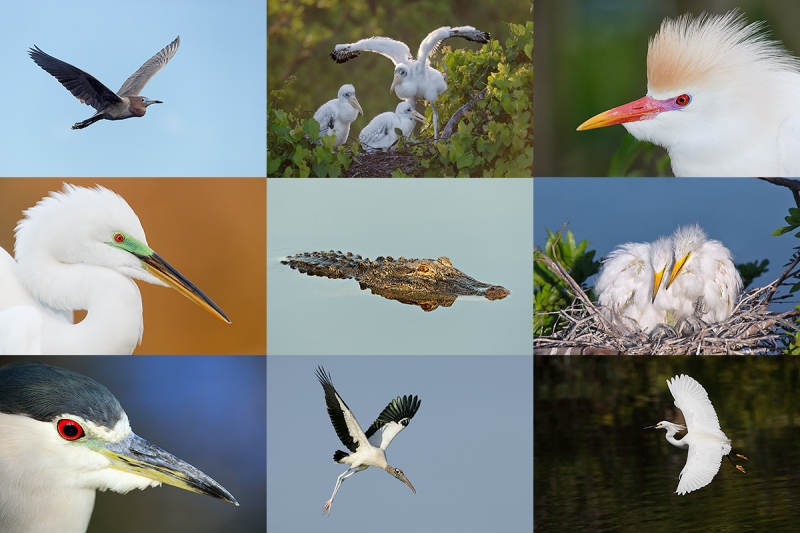Stuff
My long travel day on Tuesday came to an interesting end. With my flight from PHX to MCO delayed 3 hours I called Jim and told him that I would take a limo home. My flight got in at about 11:30am and it took a while for the luggage to come out. My driver met me at baggage claim. On the way I realized that I did not have a gate card with me … When we got to ILE at about 1:45pm I tried calling the house and Jim’s cell phone but nobody picked up so we settled in and hope that someone would be getting home late and we could follow them in. After too long I realized that there was only one way that we were gonna get in. I walked the 2.3 miles to my home, fired up my car, drove back to the gate, transferred the luggage, and sent Milak home with an extra $200 for his troubles. I got in bed at 3am and slept perfectly till 8:10am.
The shoulder is still the shoulder and the inguinal hernia is still the inguinal hernia. I had a 10,000 watt laser treatment on the left shoulder and I continue to feel a bit better each day. On Friday I will be getting a stem cell/PRP/Prolozone injection in the injured wing. Time will tell.
Canon AF Settings for Birds in Flight
Geoff Coe left a comment yesterday stating that he had tried the settings in the Canon AF Settings for Birds in Flight … (free to some) and Don M asked about that. Here is the info for those who may have missed it:
Canon AF Settings for Birds in Flight … an illustrated e-mail: $10. Free with proof of purchase for any BAA Camera Users Guide.
If you previously purchased a camera User’s Guide from BIRDS AS ART, you can get your free copy of the new Canon AF Settings for Birds in Flight e-mail by following these simple directions: Click here. This will open an e-mail to Jim with the subject line filled in. Now simply cut and paste a copy either the receipt you got when you purchased a camera User’s Guide from BAA or cut and paste the cover or the first page of your User’s Guide. Then hit send.
Those who have never purchased a camera User’s Guide from us (could it be?) can click here to order the new information from the BAA Online store for $10.00. Or, you can call Jim or Jen at 863-692-0906 to order. Or, you can send us a Paypal for $10.00 to birdsasart@verizon.net.
With love, artie
The Streak
Today makes two hundred fifty-six days in a row with a new educational blog post! This one took less than an hour to prepare including the time spent on the image optimization. With all of my upcoming free time (or not…), the plan right now is to try to break the current record streak of 480 … Good health and good internet connections and my continuing insanity willing.
BIRDS AS ART
BIRDS AS ART is registered in the U.S. Patent and Trademark Office.
Money Saving Reminder
If you need a hot photo item that is out of stock at B&H, would enjoy free overnight shipping, and would like a $50 discount on your first purchase, click here to order and enter the coupon code BIRDSASART at checkout. If you are looking to strike a deal on Canon or Nikon gear (including the big telephotos) or on a multiple item order, contact Steve Elkins via e-mail or on his cell at (479) 381-2592 (Eastern time) and be sure to mention your BIRDSASART coupon code and use it for your online order. Patrick Sparkman saved $350 on a recent purchase!


Booking.Com
Several folks on the Gatorland IPT used the Booking.Com link below and got great rates and saved a handsome $25.00 in the process. If you too would like to give Booking.Com a shot, click here and to earn a $25 reward on your first booking. Thanks to the many who have already tried and used this great service.
Gear Questions and Advice
Too many folks attending BAA IPTs and dozens of folks whom I see in the field, and on BPN, are–out of ignorance–using the wrong gear especially when it comes to tripods and more especially, tripod heads… Please know that I am always glad to answer your gear questions via e-mail. Those questions might deal with systems, camera bodies, accessories, and/or lens choices and decisions.
|
|
|
This image was created on an afternoon panga (zodiac) cruise at Punta Albemarle, Isabela, Galapagos, Ecuador. I used the hand held Canon EF 100-400mm f/4.5-5.6L IS II USM lens (at 400mm) and the Canon EOS 5D Mark IV. ISO 1600. Evaluative metering -1/3 stop: 1/60 sec. at f/5.6 in Manual mode. AWB. LensAlign/FocusTune micro-adjustment: extrapolated to -2. Center Large Zone/AI Servo/Shutter button AF as framed was active at the moment of exposure. The system activated a cluster of three AF points on the left side of the bird’s breast, right on the bird’s eye. Lava Heron, vertical |
My 1/60 sec. shutter speed comments
In the Why did I go with 1/60 second when photographing from a boat? blog post here, I posted, If you think that you know why I stayed with 1/60 sec., please leave a comment. There were actually several reasons; see how many you can figure out …
Eleven folks commented and if you cherry-picked from their answers they covered all the bases. But some of the comments showed that some folks were confused.
Here is what I was thinking.
1- Though 1/60 sec. at f/5.6 was a bit of an underexposure I did not want to go any higher than ISO 1600.
2- The 100-400 has fabulous image stabilization.
3- The zodiac driver was doing a great job of keeping the panga steady by wedging the bow of the boat against the rocky shoreline and using a paddle to further stabilize it.
4- I was particularly comfortable working at the relatively short focal length of 153mm. I posted today’s vertical image (above) to show how effective IS can be even at 400mm.
Some Manual mode basics …
Note that the exposure settings for today’s image are identical to the exposure settings in the original Lava Heron post referred to above. When working in constant lighting conditions once you get a decent histogram with a given shutter speed and aperture combination, you can make a long series of images as long as the light stays the same as it will almost always do for at least five to ten minutes unless clouds are intermittently blocking the sun. You do not have to worry about how large or small in the frame the subject is. You do not have to worry about how the tonality of the background will effect the meter because you have set the right exposure for the subject. If a wave breaks over the bird the exposure for the bird is still correct. In short, one of the great advantages of working in Manual mode is that you can set it and forget it.
If this is a new concept to you and you would like to learn more type “Working in Manual Mode” in the little white search box at the top right of this blog post page and start studying.
IPT Stuff
All IPTs include an introductory briefing before the IPT begins so you know what to expect, frequent in-the-field instruction and guidance (priceless), image editing and small group Photoshop instruction during and after lunch. Breakfasts are on your own so that we can get in the field early. Lunches are on me. Dinners are on your own as well so that we can get to bed as the days in spring will be long.
Rides with the leader are available on a limited basis for $50/day.
Registering for an IPT
To register for an IPT call Jim or Jen in the office at 863-692-0906 from Monday morning through Friday lunch with your credit card in hand to leave your $500 non-refundable deposit. Balances may not be paid by credit card so you will be asked to send a check for your balance along with the signed paperwork that you will find here.
|
|
Spring at DeSoto is often magical |
DeSoto IPT #1 Sunrise: 7:07 am. Sunset: 6:22pm.
3 1/2 DAYS: SUN 15 APR thru the morning session on WED 18 APR: $1599. Limit 5 photographers.
You must purchase a season Parking Pass in advance for early entry. Click here and scroll down for info. If you are not a local, the six month pass if fine. Best to order by mail. Join me to photograph a wide variety of birds of the shore including pelicans, gulls, terns, sandpipers, oystercatchers, heron, egrets, and night-herons. Many in full breeding plumage. Most are ridiculously tame. Osprey likely. Learn to get the right exposure, flight photography techniques, my secret DeSoto locations, how to see the best situations (nobody is better at that than me), and how to make great images in extremely cluttered situations. Enjoy some great sunrises and sunsets.
Which will offer better opportunities, Desoto #1 or DeSoto #2? I have no idea. Both have the potential to be great.
|
|
Tame birds in breeding plumage and heron and egret chicks are great fun. |
Gatorland IPT #2. Sunrise: 6:48am. Sunset: 7:58pm.
3 1/2 DAYs: THURS 26 APR through and including the morning of SUN 29 APR. $1599. Limit 5 photographers.
(2 1/2 DAY option) FRI 27 APR through and including the morning of SUN 29 APR. $1199.
Must purchase Gatorland Photographers Pass. Click here for details. All early entry. Late stays Thursday, Friday and Saturday. Gatorland IPT #2 should have lots of chicks, and lots of birds in breeding plumage. We will get to photograph Great Egret, Snowy Egret, Tricolored Heron, and Wood Stork. The Cattle Egrets in full breeding plumage will be present in good numbers. Learn my Gatorland strategy, to get the right exposure, flight photography techniques, my secret Gatorland spots, how to see the best situations (nobody is better at that than me), and how to make great images in extremely cluttered situations.
Help Support the Blog
Please help support my (stupendous) efforts here on the blog by remembering to click on the logo link above each time that you shop Amazon. That would be greatly appreciated. There is no problem using your Prime account; just click on the link and log into your Prime account. With love, artie
If In Doubt …
If in doubt about using the BAA B&H affiliate link correctly, you can always start your search by clicking here. Please note that the tracking is invisible. Web orders only. Please, however, remember to shoot me your receipt via e-mail.




Please Remember to use my Affiliate Links and to Visit the New BAA Online Store 🙂
To show your appreciation for my continuing efforts here, we ask, as always, that you get in the habit of using my B&H affiliate links on the right side of the blog for all of your photo and electronics purchases. Please check the availability of all photographic accessories in the New BIRDS AS ART Online Store, especially the Mongoose M3.6 tripod head, Wimberley lens plates, Delkin flash cards and accessories, and LensCoat stuff.
As always, we sell only what I have used, have tested, and can depend on. We will not sell you junk. We know what you need to make creating great images easy and fun. And please remember that I am always glad to answer your gear questions via e-mail.
I would of course appreciate your using our B&H affiliate links for all of your major gear, video, and electronic purchases. For the photographic stuff mentioned in the paragraph above, and for everything else in the new store, we, meaning BAA, would of course greatly appreciate your business. Here is a huge thank you to the many who have been using our links on a regular basis and those who will be visiting the New BIRDS AS ART Online Store as well.
Be sure to like and follow BAA on Facebook by clicking on the logo link upper right. Tanks a stack.
Typos
In all blog posts and Bulletins, feel free to e-mail or to leave a comment regarding any typos or errors. Just be right :).

















You cannot just set it and forget it in Manual with auto ISO on. This should be called “I mode”. Your evaluative metering is choosing ISOs and exposure even if you are using compensation. Spot meter your background, snap one and look at your histogram. Change your ISOs(or S,A) according to your subject.
Jesse, I am not sure what planet you are from but I have never recommended using auto ISO except in rare circumstances none of you refer to …
with love, artie
ps: your suggested method is absurd 🙂
I enjoy your blog. Just a note that the text under your pic says you’re at 4000 mm instead of 400.
Thanks times 2 Steve. I screwed that up twice!
with love, artie
Artie: I love this image, even better than yesterday’s. But I’m confused about the setting you used. You wrote that you posted today’s image to show how effective the IS is even at 400 mm, but your figure caption says you were at 153 mm. Is that a cut-and-paste error from yesterday?
When I got my Canon 100-400 II lens I was initially struck by three things: (1) How close it focuses, (2) how fast it focuses, and (3) the amazing image stabilization, which really is the 4 stops that Canon claims. I have got sharp images at 1/13 of a second, although when I’m forced to use that slow a shutter speed and I’m not trying to make a blur, I fire off several shots hoping that one will be sharp. In addition to the three things above, I’m also pleased at how sharp the lens is, even wide open; and that it’s relatively inexpensive for what you get.
Another left-over type. This one was at 400mm as implied by the text. My bad 🙂
Thanks for commenting, with love.
artie
ps: i agree on the 100-400 II! It is one of the many things that I miss about Canon.
Hate to admit I don’t understand lens align/focus tune micro adjustments. How to use, why to use? I send my Canon 5D Mark III into Canon to have it checked 1 to 2 times a year for focus, firmware updates etc. I use back focus and zoom in 100% when in the field to check focus. When put on computer looks good. Please explain what I’m missing.
If you are happy and the images are truly sharp, you are good to go. Do understand that many lens/TC/camera body combinations have serious front- or back-focusing issues even though their is nothing wrong with any of the gear … Micro-adjusting Canon gear or Fine-tuning Nikon gear can pay huge dividends.
with love, artie